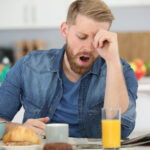February 8, 2018
You’re out with friends at a restaurant and realize it’s time to check your blood sugar, because of your diabetes. Instead of excusing yourself from the table, and going to the restroom to break out your glucometer, test strips, and lances, (hoping there’s enough room by the sink) you simply reach for a smartphone-like device. Then you wave it like a “magic wand” above a sensor on your arm and “poof” you have your reading.
This might sound too good to be true, but the FDA just approved such a system last fall, and more and more people with diabetes are making the change from their traditional glucometer to this new technology. Is this device the best choice for you?
Convenient blood sugar monitoring for diabetes
The FreeStyle Libre Flash Glucose Monitoring System, developed by Abbott Diabetes Care, Inc., is the first continuous glucose monitoring system that can be used by adult patients to make diabetes treatment decisions, without those dreaded finger-sticks. The system includes a reader and a sensor that essentially replaces daily finger-sticks, with a single poke in the arm. The quarter-sized sensor remains on your arm for up to 10 days. You can wear it during exercise, while showering, and even swimming.
The sensor measures glucose every minute, records readings every 15 minutes, and stores up to 8 hours of glucose data. Coupled with the reader, you can then take a reading of your glucose any time just by waving the reader above the sensor.
Cost can be a trade-off for no finger-sticks
The convenience and ability to check your blood sugar anytime are huge advantages over traditional glucose monitoring systems, but it comes at a price. The cost of one 10-day sensor ranges from $35 to $53, or about $3.50 to $5.30 per day, according to diaTribe Learn, a diabetes education website, with an additional one-time cost of $69 to $97 for the reader.
That compares to a range of $0.37 to $7.00 per day for lancets and test strips depending on the brand and how often you test your blood sugar, based on price comparisons found on Walgreens and CVS websites; plus a one-time cost of $15 to $25 for a glucose-monitoring meter.
Insurance coverage and calibration time could be drawbacks
At this time, US insurers, Medicare, and Medicaid do not yet cover the cost of the system, which means it would be all out-of-pocket for many people with diabetes until coverage can be negotiated with insurers. Until then it could be a hefty monthly cost up to $160 compared to a typical $15 to $25 copay for those using traditional monitoring systems.
Another drawback is that the version of the device approved in the US requires a 12-hour “warm up” period for the system to accurately calibrate readings with the reader. Consequently, the reader will not show any real-time glucose data for the first 12 hours each time a new sensor is inserted into the arm. That means you can’t get rid of all your lancets and test strips, as those will still be needed for the first day each time you change sensors.
The reason for this 12-hour warm up is that the FDA determined that the 1-hour warm up time the system is approved for in Europe does not provide the most accurate readings. The average measurement error after the 12-hour warm up was 9.7% compared to about 11% for the one-hour calibration time. It is a trade-off compared to similar continuous monitoring systems by Medtronic and Dexcom that require finger stick calibration.
A risk of too low or too high blood sugar
In terms of safety and reliability, the difference in error rate was enough for the FDA to require the 12-hour “warm up” period. The FDA noted in its approval that the system can have a risk of hypoglycemia or hyperglycemia, (too low or too high blood sugar), in cases where the information provided by the device is inaccurate and used for treatment decisions. In addition, patients need to know that it does not provide real-time alerts or alarms, and cannot alert users to low blood sugar while sleeping.
When launched in the US, the FreeStyle Libre system did not have smartphone connectivity. However, it will probably only be a matter of time, since the company already offers data sharing, via its LibreLinkup, available in several other countries.
If you decide to try the system, you will need a prescription for it. The Abbott website offers an easy prescription request form and will forward it to your healthcare provider.
At Healthcare Associates of Texas, we specialize in finding the optimal treatment for you. Our diabetes specialists work with you to help manage your blood sugar and find the best long-term therapy for your diabetes. Book an appointment today.
Source: diaTribLearn, “FreeStyle Libre Now Available in Major US Pharmacies”
DISCLAIMER
The information featured in this site is general in nature. The site provides health information designed to complement your personal health management. It does not provide medical advice or health services and is not meant to replace professional advice or imply coverage of specific clinical services or products. The inclusion of links to other web sites does not imply any endorsement of the material on such websites.



